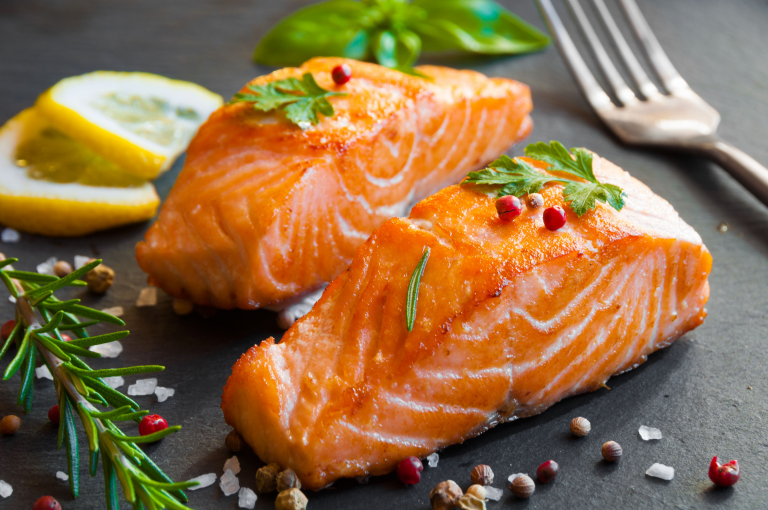Top 6 Omega-3 Rich Fish to Include In Your Diet
Incorporating omega-3 rich fish into your diet is a great way to boost your overall health. Omega-3 fatty acids are essential fats that your body cannot produce on its own, making it crucial to obtain them through food. These fatty acids are known for their myriad of health benefits, including supporting heart health, reducing inflammation, and enhancing brain function. Fish, particularly fatty fish, are among the best natural sources of omega-3s. In this article, we’ll explore the top fish high in omega-3 fatty acids, highlighting their nutritional content and benefits, along with some delicious ways to enjoy them.
Salmon
Omega-3 Content: 1,100 to 1,900 mg per serving (100 grams)
Calories: Approximately 150 calories per serving (100 grams)
Salmon is renowned for its high omega-3 fatty acid content, which is beneficial for heart health, reducing inflammation, and supporting brain function. Rich in protein and essential vitamins like vitamin D and B12, salmon also provides a substantial amount of antioxidants. Its mild flavor and versatile texture make it a popular choice for grilling, baking, or adding to salads and pasta dishes.
Mackerel
Omega-3 Content: 1,100 to 1,700 mg per serving (100 grams)
Calories: Approximately 170 calories per serving (100 grams)
Mackerel is another top source of omega-3 fatty acids, contributing to cardiovascular health and lowering blood pressure. This oily fish is packed with nutrients, including selenium, vitamins B6 and B12, and niacin. Its robust flavour and firm texture are ideal for smoking, grilling, or incorporating into fish spreads and pâtés.
Sardines
Omega-3 Content: 1,400 to 1,500 mg per serving (100 grams)
Calories: Approximately 208 calories per serving (100 grams)
Sardines are small but mighty when it comes to omega-3 fatty acids. These nutrient-dense fish are also rich in calcium, vitamin D, and protein, making them excellent for bone health. Due to their small size, sardines have lower mercury levels, making them a safer choice for frequent consumption. They are commonly enjoyed canned in oil, fresh, or grilled, and are perfect for salads, sandwiches, and pasta dishes.
Herring
Omega-3 Content: 1,200 to 1,400 mg per serving (100 grams)
Calories: Approximately 158 calories per serving (100 grams)
Herring is a flavourful fish that offers a significant amount of omega-3 fatty acids, supporting heart health and reducing the risk of chronic diseases. Rich in vitamin D and selenium, herring also helps boost the immune system. It is often pickled, smoked, or grilled and is a traditional ingredient in many European cuisines.
Anchovies
Omega-3 Content: 1,200 to 1,400 mg per serving (100 grams)
Calories: Approximately 131 calories per serving (100 grams)
Anchovies might be small, but they pack a powerful omega-3 punch. These tiny fish are also high in calcium, selenium, and niacin, contributing to bone health and metabolic function. Often found in Mediterranean dishes, anchovies are typically salted, canned, or used as a savoury addition to pizzas, salads, and sauces.
Tuna (Bluefin)
Omega-3 Content: 800 to 1,500 mg per serving (100 grams)
Calories: Approximately 144 calories per serving (100 grams)
Bluefin Tuna is a rich source of omega-3 fatty acids that promote cardiovascular health and brain function. High in protein and essential nutrients like vitamin D, selenium, and iodine, tuna is a nutritious option for many diets. Its firm texture and mild flavour make it suitable for sushi, grilling, or adding to salads and sandwiches.
Incorporating these omega-3 rich fish into your diet can provide numerous health benefits, from improved heart health to enhanced brain function. Their versatility in cooking and robust nutritional profiles make them excellent choices for anyone looking to boost their intake of omega-3 fatty acids. By regularly consuming omega-3 rich fish, you can enjoy both delicious meals and the significant health advantages they offer.








